Neanderthals: Our extinct human relatives
Neanderthals are an extinct lineage of hominins that emerged around 400,000 years ago and died off around 40,000 years ago. They are the closest known human relatives and interbred with Homo sapiens.
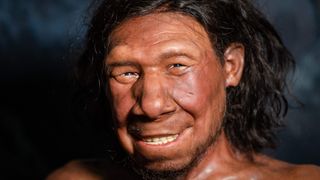
The Neanderthals, our closest human relatives, roamed the Earth hundreds of thousands of years ago. Although they are long extinct, their genes are still present in modern human DNA. Here we look at the fundamental questions about who Neanderthals were they were, what they ate, when they mated with humans and what life was like for this lost human lineage.
Who were the Neanderthals?
The Neanderthals were likely our closest human relatives. Members of this now-extinct group were hominins — a lineage that includes living humans (Homo sapiens) and our extinct relatives.
Studies suggest that H. sapiens last shared a common ancestor with Neanderthals somewhere between 600,000 and 800,000 years ago, though the exact date of the split is debated. Neanderthals arose as a distinct population between 400,000 and 350,000 years ago and went extinct around 40,000 years ago, though exactly why isn't clear.
Neanderthals were closely related to another group of extinct, little-known human relatives called the Denisovans. Scientists analyzed the DNA of a "pre-Neanderthal" population from a site in Spain known as the Sima de los Huesos, or "Pit of the Bones," and found that Neanderthals and Denisovans diverged from each other before 430,000 years ago.

Rebecca Wragg Sykes has studied Neanderthals for 20 years. In addition to her academic work, she is widely recognized for her public scholarship in science communication, through writing, broadcast and consultancy.
Her first book "Kindred: Neanderthal Life, Love, Death and Art" won the 2021 PEN Hessell-Tiltman prize for history. In 2022 she received the Royal Anthropological Institute's Public Anthropology Award, and the President's Award from the Prehistoric Society. She is currently writing her next book, "Matriarcha: Prehistory Re-imagined."
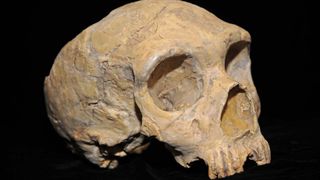
Were Neanderthals a different species from us?
Most experts agree that Neanderthals are a separate species from us. Neanderthal skeletons have both obvious and subtle differences from those of H. sapiens, leading scientists in 1864 to assign them the species name Homo neanderthalensis. Modern analysis of ancient DNA shows that Neanderthals mated with ancient Homo sapiens and produced fertile offspring. But other closely related animal species, such as polar and brown bears, can also produce fertile offspring, so this is not sufficient to classify creatures as part of the same species.
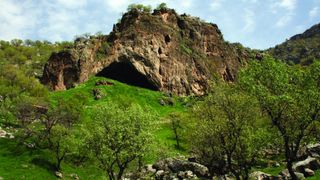
Where did Neanderthals live?
Neanderthals' core range was in western Eurasia. They lived as far west as what is now Wales and as far east as the Altai mountains in Siberia. They also lived around the Mediterranean as far south as Israel and reached across from what is now Iran to Uzbekistan in the plains of Central Asia.
During their hundreds of thousands of years of existence, Neanderthals experienced global climate changes ranging from ice ages to warm periods even slightly hotter than those seen today.
Neanderthals thrived in steppe or warm forests, and their "power sprint" anatomy may have helped them hunt in woodlands. Research published in 2021 found that Neanderthals living in a forested lake basin in modern-day Germany around 123,000 years ago may have altered the landscape by burning or clearing vegetation. Another study in 2023 from the same team suggests that Neanderthals hunted giant elephants, and that these huge sources of food could have supported relatively large groups of people.

What did Neanderthals look like?
Overall, Neanderthals looked a lot like us. If you saw one from behind, you would likely see a human form, perhaps a little on the short side, but walking perfectly upright. Yet once they turned around you’d start to see clear differences.
Although Neanderthal skulls and brains were large like ours, the shape differed: Their heads were long rather than globe-shaped and had lower foreheads and crowns. The internal structure of their brains was also different from ours. While researchers have zeroed in on more anatomical details that distinguish Neanderthals from H. sapiens, explaining exactly why they looked different remains tricky. Some features, such as their large rib cages or noses, might be related not only to cold adaptation but also to their physically intensive lifestyles, as researchers described in a 2018 study in the journal Proceedings of the Royal Society 'B'.

What did Neanderthals eat?
Neanderthals primarily ate meat — usually from big or medium game, but birds, rabbits and even food from seashore foraging were also on their menu. There is growing evidence that they sometimes ate plants. Neanderthals' made and used tools to hunt and forage; archaeologists have found effective wooden throwing spears and digging sticks. Sharp stone tools were used to butcher animals they hunted, and a 2023 study suggests that in addition to cooking animal foods, Neanderthals also processed and cooked some plants.
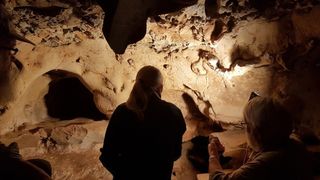
What did Neanderthal culture look like?
Neanderthals were skilled workers of stone and organic materials, including wood and bone. They had a sophisticated understanding of rock fracturing and developed many ways to make varied stone tools over time. Neanderthals also made the earliest known synthetic material — birch tar — and used it as a glue and a material for tool handles, evidence from several sites shows.
There's also growing evidence that Neanderthals’ interests in materials went beyond everyday survival. They sometimes engraved bones and applied mineral pigments to shells and eagle talons. Some researchers have claimed that Neanderthals painted on cave walls in Iberia, and a 2021 study published in PNAS shows that in one of the sites, Cueva de Ardales, there are also lumps of pigment within the Neanderthal levels. However, it remains to be demonstrated that they chemically match the paintings.
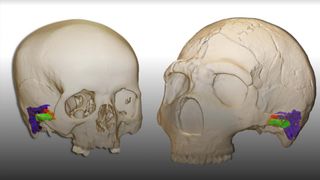
Did Neanderthals speak?
Researchers largely agree that Neanderthals communicated vocally, but whether they had language remains a hot topic. According to a 2021 study in the journal Nature Ecology and Evolution, their internal ear anatomy suggests speech of some sort was important in their everyday lives, and they could probably make a similar range of sounds as we do.
They may have used recognizable gestures during social interactions, just as we and our close relations, the chimpanzees do, according to 2023 findings in PLOS Biology.
Genetic studies showed Neanderthals also carried the FOXP2 gene, which appears key in human language ability. But their version worked slightly differently from ours. So we cannot yet draw clear conclusions about the complexity of Neanderthal speech and language, according to a 2019 review.
Did humans and Neanderthals mate?
A 2010 study in the journal Science provided the first DNA evidence that Neanderthals had long ago mated with ancestors of living people. A 2014 study suggests up to 50% of the original Neanderthal genome might be preserved, but spread into different sections across all humans living today. For people not of sub-Saharan ancestry, the most recent analyses suggest around 1% to 2.4% of their DNA originally came from Neanderthals. A 2020 study in Cell found tiny amounts of Neanderthal DNA in people from a sub-Saharan background, which they probably gained when humans from Eurasia migrated much later into Africa.
Neanderthal genes in living people seem to have come from one phase of mating around 55,000 to 60,000 years ago, yet we know from DNA in Homo sapiens fossils that mating was happening later too, around 40,000 to 45,000 years ago just before Neanderthals went extinct. Genetic data from much older Neanderthal fossils also tells us that far more ancient encounters also took place with Homo sapiens between 100,000 and 200,000 years ago, yet those periods of mating left no descendants alive today.
Scientists have compared the DNA of Neanderthals with that of modern humans to better understand how Neanderthal-derived genes shape traits in living humans. Some of the most strongly retained genes related to immunity, which makes sense as the resistance Neanderthals had built up to local Eurasian pathogens over 300,000 years would have been useful to H. sapiens people entering the continent for the first time. Additionally, a different genetic legacy from Neanderthals appears to promote fertility and be protective against miscarriage.
Yet other effects can be subtle. For example, a 2018 study in the journal Current Biology found that people with particular Neanderthal gene variants show some differences in brain shape, but not enough that you would notice when meeting them.
Some of what was perhaps historically useful may have negative impacts today. For instance, one Neanderthal genetic variant makes people today more sensitive to pain, which could lead to more rapid aging. A 2023 study found Neanderthal DNA strongly linked to "Viking's Disease," or Dupuytren's contracture, while a 2014 study in Nature tied Neanderthal genes to lupus, Crohn's disease and other autoimmune disorders.
And in 2020 researchers reported that one particular Neanderthal genetic variant makes people twice as likely to become severely ill from COVID-19; if they inherit two copies, the risk is even higher. However, the picture here is complex. In 2021, a study in PNAS showed a different Neanderthal gene offered protection against severe COVID-19.

Why did Neanderthals go extinct?
Despite their genetic legacy in living people, Neanderthals vanished as a distinctive type of hominin around 40,000 years ago. Exactly why remains a big question.
Climate is a key suspect. Many studies, including one published in 2022 in the journal Nature Ecology and Evolution, have found that rapid climate change affected the environment and prey animals of Neanderthals in the final 10,000 years of their existence. Yet Neanderthals had previously survived unstable climate and extremes without dying off. Others suggest that when H. sapiens arrived into Eurasia, our ancestors competed with Neanderthals for habitat and prey. However, more recent research has shown that early populations of our species were already present in Eurasia at least 100,000 years earlier than previously thought, reaching Australia by 60,000 years ago. What’s more, we have no archaeological evidence of conflict between modern humans and Neanderthals.
More likely, many factors led to the demise of the Neanderthals. They had relatively small and isolated communities and likely faced challenges that varied across their vast geographic range. So they may have been at higher risk of "slow motion" extinction, two 2019 studies suggest. The real "end" of the Neanderthals was probably more a quiet ebbing away than a dramatic finale.
Additional resources
You can read more about Neanderthals in my book "Kindred: Neanderthal Life, Love, Death and Art" (Bloomsbury Sigma, 2020) and about the discovery of the Denisovans in "The World Before Us" by Tom Higham (Viking, 2021) Learn more about our extinct human relatives from the National HIstory Museum of the U.K. And you can hear one simulation of what Neanderthals may have sounded like at PBS.
Sign up for the Live Science daily newsletter now
Get the world’s most fascinating discoveries delivered straight to your inbox.

Rebecca Wragg Sykes has studied Neanderthals for twenty years. In addition to her academic work as an Honorary Fellow at the University of Liverpool in the U.K., she is widely recognized for her public scholarship in science communication, through writing, broadcast and consultancy. Her work has appeared in The New York Times, the Times and The Guardian, among others. Her first book, "Kindred: Neanderthal Life, Love, Death and Art" won the 2021 PEN Hessell-Tiltman prize for history and was listed in the New York Times' 100 Notable Books. In 2022 she received the Royal Anthropological Institute's Public Anthropology Award, and the President's Award from the Prehistoric Society. She is currently writing her next book, Matriarcha: Prehistory Re-imagined.